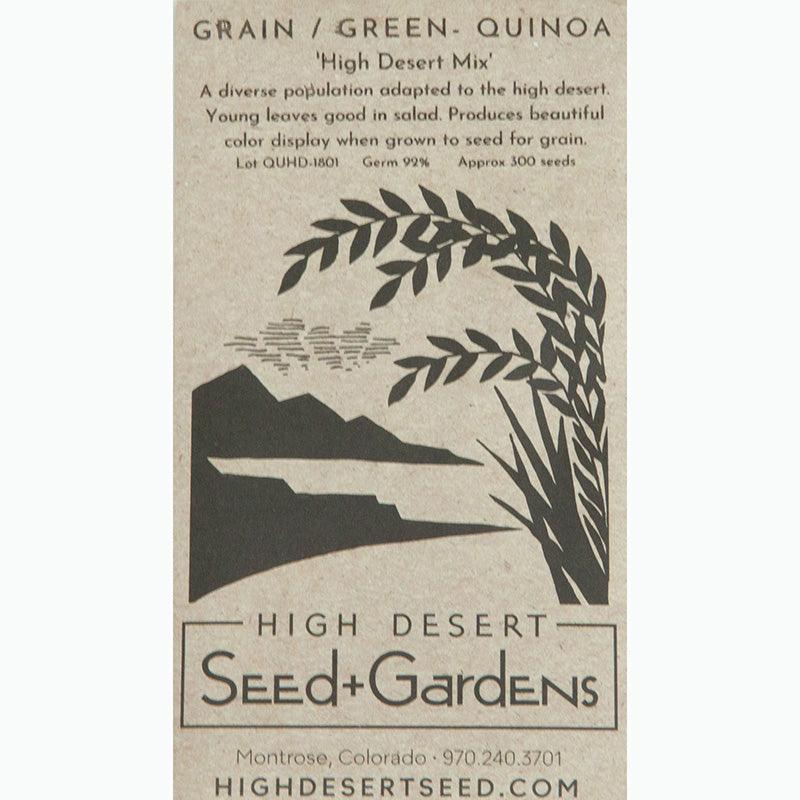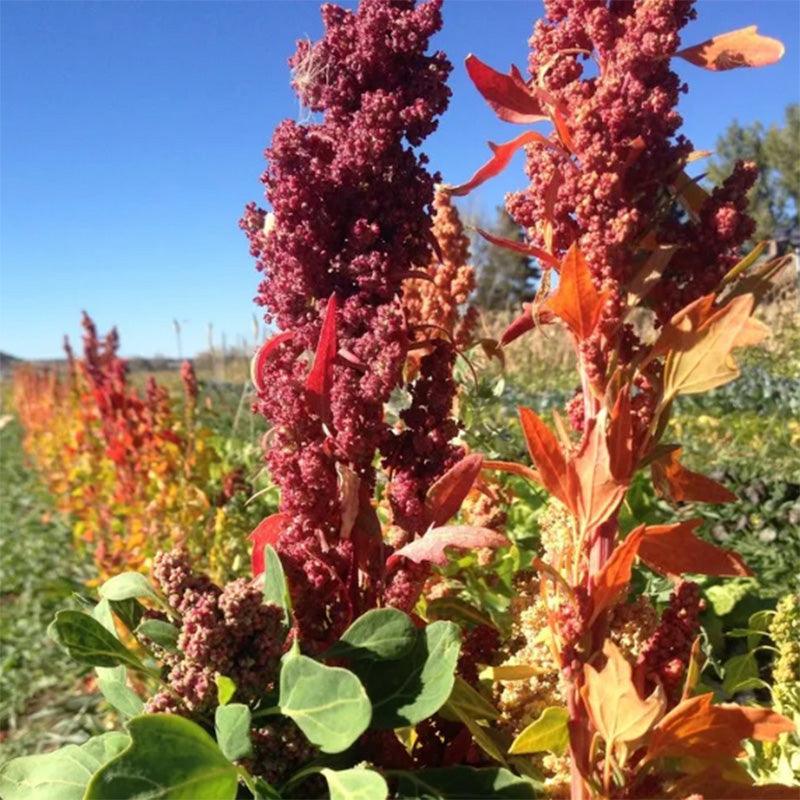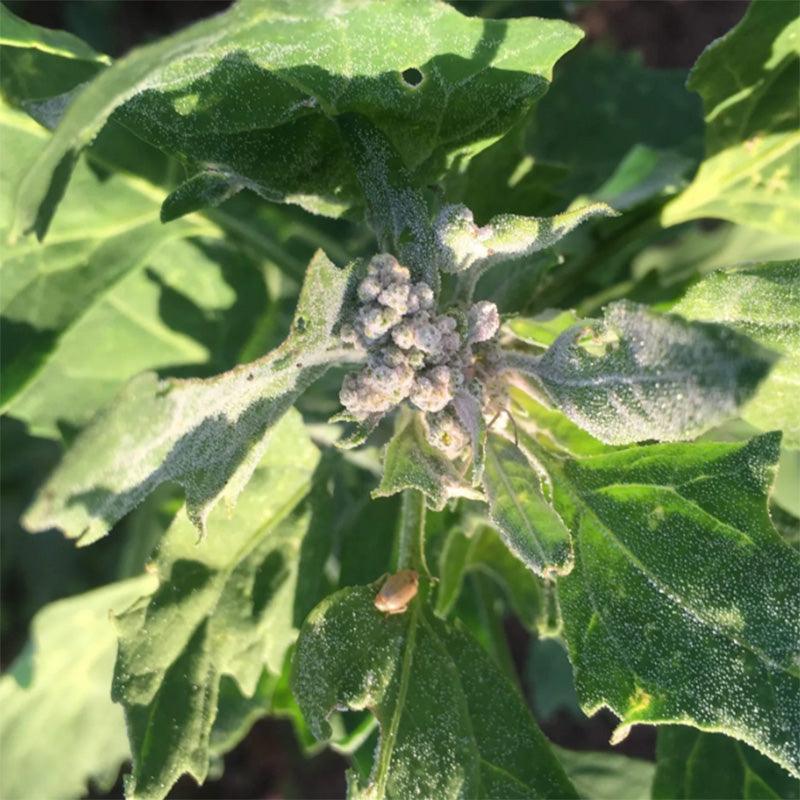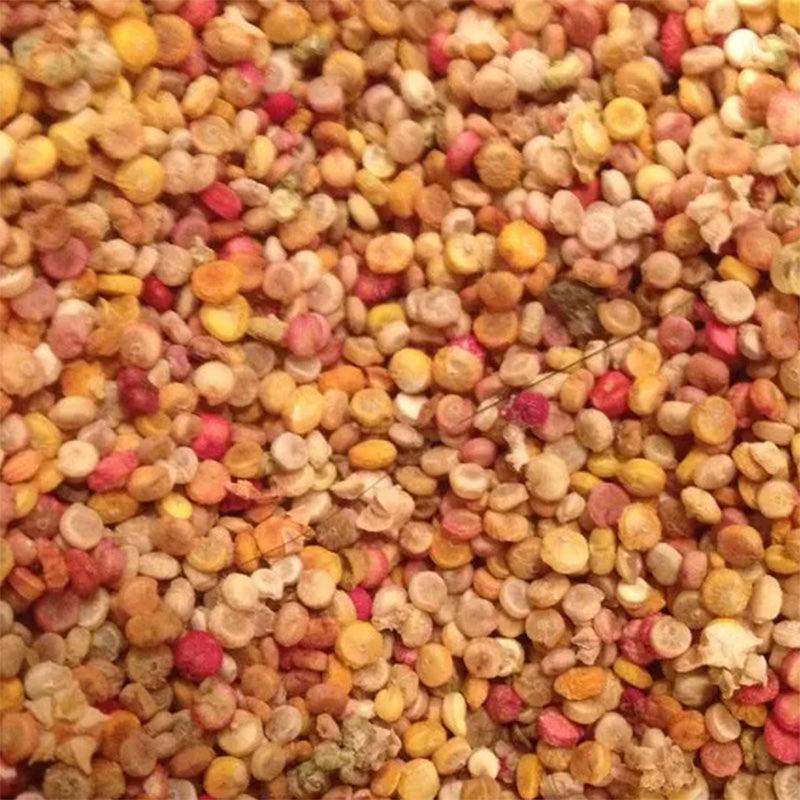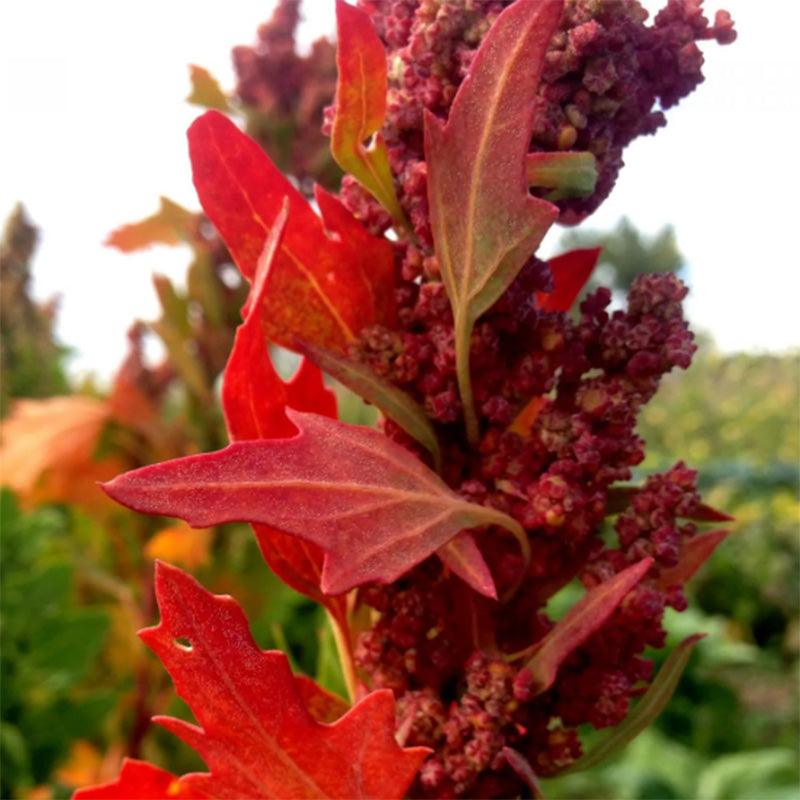Item Number: SNV9007
High Desert Mix Quinoa Grain Seeds
High Desert Mix Quinoa Grain Seeds
Nutrient-Rich Superfood
Quinoa (Chenopodium quinoa) is a versatile grain that has gained popularity for its exceptional nutritional profile and adaptability in various culinary applications. Native to the Andean region of South America, quinoa has transcended its traditional roots and become a global superfood. In this comprehensive exploration, we delve into the characteristics, cultivation practices, nutritional benefits, culinary uses, and sustainability aspects of the quinoa grain seed.
Characteristics:
Botanical Background: Quinoa belongs to the amaranth family and is classified as a pseudocereal, meaning it is not a true grass like wheat or rice.
Adaptability: Quinoa exhibits remarkable adaptability, thriving in diverse climates ranging from high-altitude regions in the Andes to lower-altitude areas around the world.
Varietal Diversity: There are several quinoa varieties, each with unique colors, including white, red, black, and tricolor blends.
Cultivation Practices:
Climate Requirements: Quinoa is well-suited to regions with cool temperatures and short growing seasons. It can withstand light frosts, making it a valuable crop in temperate climates.
Well-Draining Soil: Quinoa prefers well-draining, sandy loam soils with a slightly acidic to neutral pH. Good drainage is essential to prevent waterlogging.
Sowing and Harvesting: The seeds are sown directly into the soil, and quinoa plants are typically ready for harvest within 90 to 120 days, depending on the variety and growing conditions.
Sustainable Crop: Quinoa is recognized for its resilience and ability to thrive in marginal soils, making it a sustainable crop option for regions facing environmental challenges.
Nutritional Benefits:
Complete Protein Source: Quinoa stands out as a complete protein source, containing all nine essential amino acids. This makes it a valuable protein option for vegetarians and vegans.
Rich in Nutrients: Quinoa is a rich source of essential nutrients, including fiber, vitamins (such as B vitamins), minerals (iron, magnesium, zinc), and antioxidants.
Gluten-Free: Quinoa is naturally gluten-free, making it an excellent alternative for individuals with gluten sensitivity or celiac disease.
Culinary Uses:
Versatile Ingredient: Quinoa's versatility extends to various culinary applications. It can be cooked and used as a side dish, added to salads, and soups, or used as a base for grain bowls.
Flavor Profile: Quinoa has a mild, nutty flavor that complements both savory and sweet dishes. Its neutral taste makes it an ideal canvas for a range of flavor profiles.
Flour and Flakes: Quinoa can be ground into flour for baking or processed into flakes for use in cereals or granola.
Sustainability Aspects:
Drought Tolerance: Quinoa's ability to thrive in arid conditions and marginal soils contributes to its sustainability. It requires less water compared to traditional cereal crops like wheat.
Crop Rotation: Quinoa fits well into crop rotation systems, benefiting soil health by reducing the risk of pests and diseases associated with monoculture.
Biodiversity: The cultivation of various quinoa varieties promotes biodiversity, supporting ecosystems and preserving genetic diversity.
Quinoa, with its remarkable adaptability, nutritional richness, and versatility in the kitchen, has earned its status as a superfood. Whether consumed for its complete protein profile, gluten-free nature, or sustainable cultivation practices, quinoa has become a staple in modern diets. As awareness of its benefits continues to grow, quinoa remains a symbol of nutritional resilience and a beacon for sustainable agriculture worldwide.

Check Your Zone Compatibility:
Compatible with your zone.
Growing Zone for
,

Our Guarantee To You
Since 1976, we've served our customers at every stage of growing. Please contact us at any time. We are happy to support and assist you.
Description
Description
Quinoa (Chenopodium quinoa) is a versatile grain that has gained popularity for its exceptional nutritional profile and adaptability in various culinary applications. Native to the Andean region of South America, quinoa has transcended its traditional roots and become a global superfood. In this comprehensive exploration, we delve into the characteristics, cultivation practices, nutritional benefits, culinary uses, and sustainability aspects of the quinoa grain seed.
Characteristics:
Botanical Background: Quinoa belongs to the amaranth family and is classified as a pseudocereal, meaning it is not a true grass like wheat or rice.
Adaptability: Quinoa exhibits remarkable adaptability, thriving in diverse climates ranging from high-altitude regions in the Andes to lower-altitude areas around the world.
Varietal Diversity: There are several quinoa varieties, each with unique colors, including white, red, black, and tricolor blends.
Cultivation Practices:
Climate Requirements: Quinoa is well-suited to regions with cool temperatures and short growing seasons. It can withstand light frosts, making it a valuable crop in temperate climates.
Well-Draining Soil: Quinoa prefers well-draining, sandy loam soils with a slightly acidic to neutral pH. Good drainage is essential to prevent waterlogging.
Sowing and Harvesting: The seeds are sown directly into the soil, and quinoa plants are typically ready for harvest within 90 to 120 days, depending on the variety and growing conditions.
Sustainable Crop: Quinoa is recognized for its resilience and ability to thrive in marginal soils, making it a sustainable crop option for regions facing environmental challenges.
Nutritional Benefits:
Complete Protein Source: Quinoa stands out as a complete protein source, containing all nine essential amino acids. This makes it a valuable protein option for vegetarians and vegans.
Rich in Nutrients: Quinoa is a rich source of essential nutrients, including fiber, vitamins (such as B vitamins), minerals (iron, magnesium, zinc), and antioxidants.
Gluten-Free: Quinoa is naturally gluten-free, making it an excellent alternative for individuals with gluten sensitivity or celiac disease.
Culinary Uses:
Versatile Ingredient: Quinoa's versatility extends to various culinary applications. It can be cooked and used as a side dish, added to salads, and soups, or used as a base for grain bowls.
Flavor Profile: Quinoa has a mild, nutty flavor that complements both savory and sweet dishes. Its neutral taste makes it an ideal canvas for a range of flavor profiles.
Flour and Flakes: Quinoa can be ground into flour for baking or processed into flakes for use in cereals or granola.
Sustainability Aspects:
Drought Tolerance: Quinoa's ability to thrive in arid conditions and marginal soils contributes to its sustainability. It requires less water compared to traditional cereal crops like wheat.
Crop Rotation: Quinoa fits well into crop rotation systems, benefiting soil health by reducing the risk of pests and diseases associated with monoculture.
Biodiversity: The cultivation of various quinoa varieties promotes biodiversity, supporting ecosystems and preserving genetic diversity.
Quinoa, with its remarkable adaptability, nutritional richness, and versatility in the kitchen, has earned its status as a superfood. Whether consumed for its complete protein profile, gluten-free nature, or sustainable cultivation practices, quinoa has become a staple in modern diets. As awareness of its benefits continues to grow, quinoa remains a symbol of nutritional resilience and a beacon for sustainable agriculture worldwide.
Shipping Information
Shipping Information
Shipping Weight: 0.02 lb
Dimensions: 0.5"L x 3.0"W x 4.0"H
Features
Features
- Good for Drying
- Open-Pollinated
Characteristics
Characteristics
Planting & Care
Planting & Care
Soil and Water: Soil should have adequate organic matter and should have a fine texture. Maintain adequate moisture to germinating seeds. Do not over-water once plants become established.
Planting and Growing: Direct seed from mid-April through May into rows spaced at least 24" apart. Seeds are small so mixing with some sand will help with distribution. Grows best in cool, dry conditions and will fail if temperatures are too hot.
Harvesting and Storage: Harvest primary seed heads when they are still brightly colored, thresh by rubbing the head. Clean grain with a 1/8" mesh and winnowing.
Useful Information
Useful Information
Guarantee
Guarantee
Share
